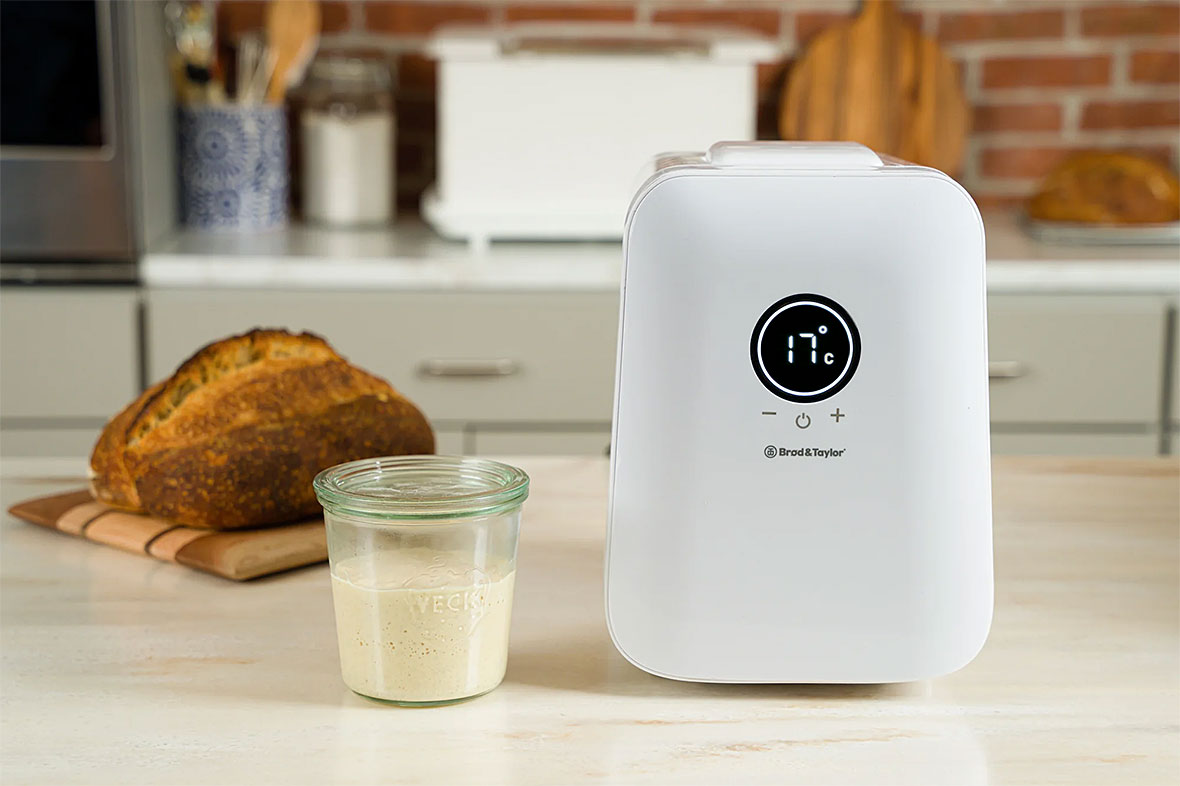Bread & Sourdough Recipes
No-Knead Bread Recipe
No-Knead bread is justifiably popular due to its ease and good results. In side-by-side tests, we discovered that 90 seconds of extra work is all it takes to transform no-knead bread from good to great. Three simple folds, each taking about 30 seconds, will do the trick. We’ve also tweaked the ingredients to make a big improvement in the flavor of this simple bread. Read more about our improvements to no-knead bread.
Yield: One round loaf
Timing:

Start this bread at least 17 hours before serving time. While the exact timing of the folds isn’t important, it is good to space them out. The long fermentation usually happens overnight, so it’s easy to do one fold before bed and then another after rising in the morning, fitting the third in when convenient.
Ingredients
| Menge | |
| Unbleached all-purpose, bread or whole grain flour* | 400 g (2¾ cups*) |
| Whle Rye Flour | 30 g (¼ cup*) |
| Instant yeast | 1/8 tsp |
| Salt, fine | 1½ tsp |
| Water, about 21 ºC | 320 ml |
* Measured by dipping the cup into a container of flour, then leveling off.
Equipment: Brød & Taylor Folding Proofer, dutch oven (oven-safe to at least 230 ºC).
Mix the dough. In a large bowl, mix flour, yeast and salt until well distributed, then add water and mix until dough is evenly hydrated. The dough will be very soft and sticky.
Ferment the dough. Cover the bowl and place in the Proofer to ferment at 21 ºC for at least 12 and up to 16 hours. During this long fermentation, put the dough through three folding sessions, well spaced out. To fold the dough, use a wet hand or spatula to scrape a section of dough from the side of the bowl, then lift and stretch it a bit before folding it in to the center of the bowl. Do this eight times for each folding session, traveling around the circumference of the bowl.
Shape the bread. After the long fermentation in the bowl and three folds are complete, our recipe follows the classic no-knead method for folding and shaping the dough. To shape the dough, scrape it out onto a floured work surface and give it a fourth eight-way fold, then cover and allow to rest for 15 minutes. While the dough is resting, prepare a sheet pan or plate with an oblong of parchment about 16″ / 41cm long (the long ends will be used to lift and move the risen loaf).
Shape the dough into a round (one easy way to do this is with one last eight-way fold), brushing flour off as needed. If desired, stretch the outermost “skin” by brushing excess flour from the work surface, flipping the loaf seam side down and sliding the base towards you. Rotate the loaf and repeat to stretch the skin evenly (do not tear). Place the loaf seam side up on the parchment-lined pan or plate, cover with a generously floured kitchen towel and place the loaf in the Proofer, set to 22 ºC.
Proof the bread. Proof the bread until an indent in the side of the loaf springs back slowly, about 2½ hours at 22 ºC.
Preheat the oven. At least 30 minutes before baking, place a dutch oven in the lower part of the oven and preheat to 230 ºC.
Bake the bread. When the loaf is finished proofing, use the oblong ends of the parchment to carefully lift the loaf and transfer it into the hot dutch oven (still seam side up). Place the lid on the dutch oven to seal in steam and bake the bread for 30 minutes. After 30 minutes, remove the lid and rotate the dutch oven, then continue to bake uncovered for another 20-30 minutes, until very well browned and the bread sounds hollow when knocked gently from the bottom. Cool before slicing.
 Select Country
Select Country













